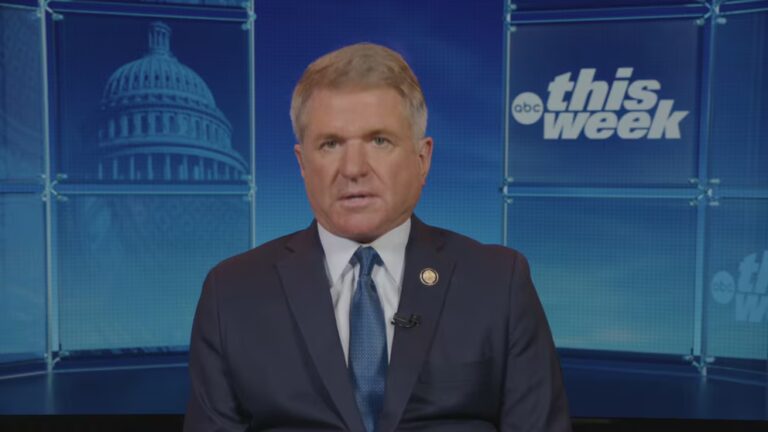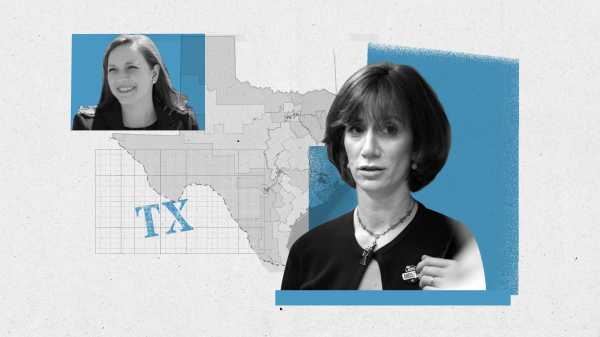
HOUSTON, Texas — Armed with a package of campaign door hangers and a rudimentary grasp of Spanish, progressive Democratic congressional candidate Laura Moser spent a recent Saturday walking from door to door in Cypress, one of Houston’s far-flung, middle-class suburbs in Texas’s Seventh District.
Wearing a “dorky” wide-brimmed visor to deflect the scorching Texas sun, Moser remarked that Houston and its suburbs used to be much whiter when she was growing up. But like the rest of the state, the city has quickly diversified; many people working on their lawns or sitting outside in Cypress were speaking Spanish, and a group of Latino and African-American children raced their bikes up and down the culs-de-sac.
Several neighborhood residents told Moser they don’t often see candidates for Congress knocking on doors as she encouraged them to get out and vote during the May 22 runoff election.
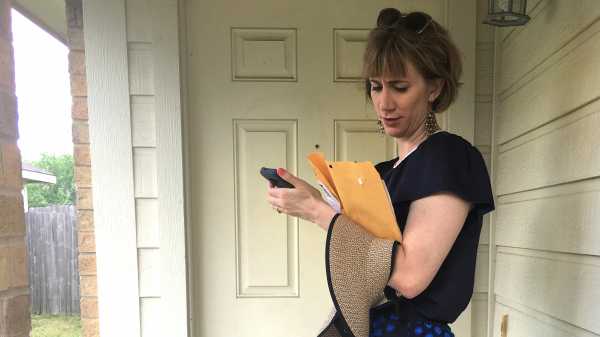
“The fact you’re out here says bunches,” a voter named Elizabeth said to Moser as she walked to her car. “Change is you in these streets, and I see that.”
These are the voters Texas Democrats want to see turn out in droves during the 2018 midterms. But in past years, they haven’t had a lot of success convincing them.
“Republicans, Democrats, they’re all the same,” a man sweeping the sidewalk outside his house told Moser (he declined to give his name to Vox). “Texas has always been Republican. People thought at the end of the day, it doesn’t matter.”
Moser pushed back on the idea, telling the man it’s people like him who have the power to boost the state’s historically atrocious turnout and elect a progressive, diverse slate of candidates in the process.
“You’re the most powerful voting bloc in the country,” she said. “If everyone voted, you would get people representing you who looked like you.”
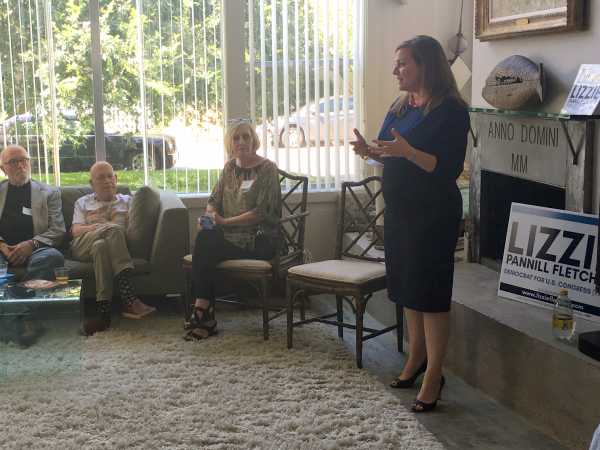
The next day, Moser’s Democratic opponent Lizzie Pannill Fletcher stood in front of about 15 people gathered at a house party near Houston’s midtown. It was the end of a long day for Fletcher: She woke up early for a local television interview, attended Sunday services at a church in Cypress, and then rushed to the house party — all while wearing the same pair of open-toed heels.
While Moser focuses her attention on turning out the district’s progressive base, Fletcher is using a different tactic to beat the Seventh District’s Republican incumbent Rep. John Culberson, who has been in office since 2001. A big part of her strategy is reaching out to disaffected moderate Republicans who don’t like President Donald Trump or congressional GOP leaders. Running in Texas, Fletcher wants to prove she can work across the aisle.
“There’s a little bit of a debate on how do you win, how do you get the vote?” Fletcher told one house party attendee who asked how she planned to win over Republican voters. “Our view, and what I’ve been saying is this campaign is going to talk to every single vote: people who have never voted before, people who have voted for Culberson before, people who have voted Democratic completely.”
Fletcher insists she won’t moderate her positions to try to get Republicans on her side; she’s trying to paint Culberson as a far-right conservative who is completely disconnected from the district (Fletcher likes to say he spends more time in Virginia than in Houston). A longtime Houston attorney, Fletcher points to her Republican clients who have pledged to support her over Culberson if she wins the nomination.
“We need a little more of Houston in Washington, DC,” she said. “People are frustrated with Culberson’s record of inaction and people are ready for someone who’s going to be their advocate. And I think that we’ve seen that this district has thoughtful voters who want to find someone who’s really going to represent them.”
The Houston suburbs that make up the Seventh, whose residents have cast ballots for a Republican for decades, might be more likely to vote for the steady, stable representation of Fletcher over Moser’s firebrand candidacy.
“I don’t get the feeling that it’s a slash-and-burn district,” said Houston resident Norrie Leder, a Fletcher supporter and former Texas chapter leader for gun control advocacy group Moms Demand Action. “I am looking for people who can get things done.”
Some longtime Democratic strategists in Texas believe the stable, moderate brand will carry the district in the fall, and they think Fletcher is emblematic of that.
“She comes across as someone who just wants to go up and do the job well,” said Colin Strother, a veteran Texas Democratic strategist. “I feel like she’s prototypical of what voters in the district are looking for. They’re looking for someone to be an adult, someone they know they can leave alone with a box of matches for five minutes and not set their living room on fire.”
The two theories of how Democrats can win in Texas are playing out in TX-7
TX-7 was an out-of-reach district for decades, but national Democrats see a glimmer of hope after Hillary Clinton won the district in 2016. In the 2018 midterms, the Democratic Congressional Campaign Committee (DCCC) is eyeing it as one of three flippable districts, along with TX-32, outside Dallas, and TX-23, a huge West Texas district encompassing parts of San Antonio and most of the southern border.
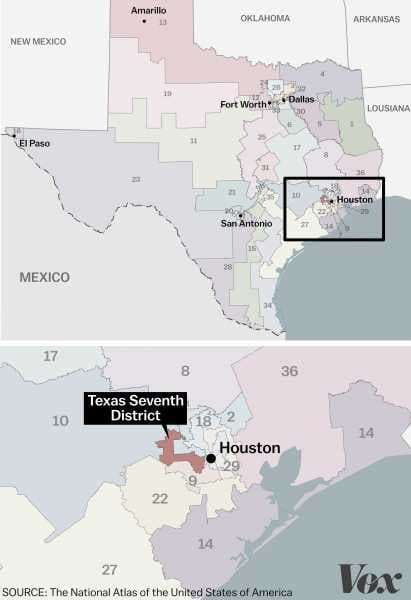
Moser and Fletcher represent the two schools of thought on how to turn ruby red Texas Texas purple: by turning out diverse, progressive new voters or appealing to moderate, crossover Republicans.
“The way I see it is that we’ve got one candidate saying … ‘What we need to do is play it safe and not make any sudden moves or loud noises, and we’re going to have a legitimate shot at winning this thing. That’s Fletcher,” said Strother. “Then we have Moser, who says, ‘That’s horse shit; that doesn’t work. We’ve got to go over to the far left and get people out to vote.’”
There isn’t a huge amount of daylight between Moser and Fletcher on the issues. The biggest policy disagreement they have is on single-payer health care. (Moser supports it; Fletcher wants to stabilize the Affordable Care Act.) Both advocate for more commonsense gun control measures and improved access to women’s health care, and both are running on issues local to Houston, including improving the city’s public transportation infrastructure and getting more money for Hurricane Harvey recovery.
The two women have very similar backgrounds: Both are Houston natives and come from connected, political families; both attended St. John’s, the same elite prep school that produced filmmaker Wes Anderson and political commentator Molly Ivins.
But for all their similarities, they are clearly walking different paths to a Democratic win, which is emblematic of a larger identity crisis for Texas Democrats.
“That is the philosophical quandary we find ourselves in as Texas Democrats: Do we go bold or do we go safe,” Strother said.
National Democrats clearly want to play it safe. The DCCC thinks the Moser method will lose a general election race against Culberson: It already dumped an opposition file on her before the March Texas primary, highlighting Moser’s recent move back to Houston from Washington, DC, and past statements she made seemingly denigrating parts of Texas. There’s some evidence that the move backfired, allowing Moser to fundraise tens of thousands off it and earn the backing of the Sanders-aligned group Our Revolution.
Strother admits that unabashed progressivism seems to be catching on in the race for US Senate, where Democratic Rep. Beto O’Rourke is running a competitive race against Republican Sen. Ted Cruz. But whether it will work in this suburban Houston district is another question entirely.
“Politics [is] timing and matchups,” Strother said. “For Beto O’Rourke, it’s really working for him to be this bold progressive, but that’s on a larger scale. On a much smaller-scale, neighborhood-to-neighborhood campaign, I don’t know that ‘firebrand progressive’ would work.”
Democrats are about to find out.
Texas Democrats are at a crossroads
The Texas Seventh is a huge and diverse district. Its neighborhoods encompass everything from the mega-mansions and gleaming Land Rovers in Piney Point Village to yard sales featuring poofy quinceañera dresses in the majority Latino and African-American middle-class neighborhoods like Cypress.
The district’s diversity is a snapshot of the rest of the state: Though Texas is thought of as staunchly conservative, its demographics are shifting rapidly. Hispanic residents are moving in quickly; since 2010, more than three times as many Hispanic residents as whites have come to the state, according to the Texas Tribune.
Texas Democrats have historically been lousy at taking advantage of the changing demographics. But if they can make enough gains on turning out minority voters in a year when it looks like there might be depressed Republican turnout, it could be enough to turn the red state purple. This has major political implications for the rest of the nation, from control of Congress to how Democrats run future elections.
Moser thinks this is a bet worth taking. But Fletcher is clear-eyed that she needs to win over at least some Republicans to beat Culberson.
“If you look at the numbers, Hillary Clinton won the district by winning 33,000 crossover votes — Republicans or independents,” Fletcher told voters at a recent house party. “It’s certainly not the only way to win, but those are people who vote regularly, and they’re people who are willing to look at the candidate and not vote a straight party ticket.”
The conventional wisdom is to play by Fletcher’s method. Some political experts say turning out the district’s progressive base still won’t be enough for a Democrat to beat Culberson.
“There aren’t very many districts in the state where an increase in the progressive base is going to do it for you,” said Texas political consultant Keir Murray. “If you’re going to pick up seats in this state, you’ve got to pick up votes in the middle.”
There could be signs that’s starting to change, with a surge in grassroots energy and organizing in recent years. There are a growing number of groups in Texas organizing working-class, often Latino, residents on ballot initiatives for things like paid sick leave. Austin just passed a paid sick leave plan, and the Dallas and San Antonio city councils are considering similar proposals.
Progressive groups like the Texas Organizing Project and Workers Defense fund are making a concerted effort to engage minority voters on issues like labor and criminal justice and encourage them to turn out even if they do not support specific candidates in congressional races.

“We feel like our recipe for Texas is rooted in engaging disengaged black and brown voters,” said Crystal Zermeno, political strategy director at Texas Organizing Project. “The reason why we’re so deeply red is because there were old politics on both sides that … really focused on that elusive white swing voter. So for way too long, there was disengagement for way too long in communities of color.”
Jim Hightower, a longtime progressive Texas Democrat who is now a board member of Our Revolution, says progressives have been quietly mobilizing support and winning local races since 2016. Hightower points to the last blue wave that hit Texas in the late 1980s and early ’90s and swept in legendary Texas Gov. Ann Richards. It also elected him commissioner of the Texas Department of Agriculture. He sees the same kind of wave building this year.
“Texas is not a right-wing state — it’s a nonvoting state. It’s also a populist state. That spirit is out there, but you’ve got to tap into it,” Hightower told me. Hightower and other progressives say Moser is exciting the left with her candidacy — promising to be a different kind of Texas Democrat.
“Laura’s genuine; she’s exactly what CD-7 needs,” said Joshua Butler, a former Democratic candidate for the Seventh District now supporting Moser.
Both candidates could be battling it out now — but the real question is November
In the end, whichever candidate emerges on Tuesday will have to face Culberson in November. The environment is proving challenging for Republicans — a recent poll shows Trump has a 43 percent approval rating in Texas, and 52 percent disapprove of the job he’s doing.
Even incumbent Sen. Cruz is facing a competitive election this fall against O’Rourke, with that same recent poll showing Cruz with a lead within the margin of error.
Still, Republicans have a lot of structural advantages going into 2018. The incumbency effect is strong, and the state has been heavily gerrymandered to work in their favor. Moser’s strategy of turning out minority voters also comes with risks — Hispanics in Texas are very young; 33 percent of them are under the age of 18, meaning they can’t vote. The Texas Seventh has a strong history of voters turning out who tend to be educated, wealthy, and moderate. And the Democratic brand in the state has suffered after decades of unsuccessful elections.
“The candidates the Democrats put forth are just uninspiring,” said Gina Biondo, a Moser supporter. “Democrats just don’t vote.”
Moser thinks this is precisely the risk with going after moderate voters. “Nothing ever changes. We elect the same candidates in both parties,” she said. “There’s a lot of cynicism and indifference that takes a lot of time and money to overcome. I think you can get some [Republicans] to stay home, and others to be excited; that is what I’m trying to do.”
The question is whether Moser will get a chance to test her theory.
Sourse: vox.com

